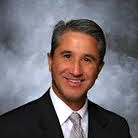(UPDATED, 1:14 p.m. Monday, to revise the total price tag of Tuesday’s school elections.)
Across the state, a high-stakes school election day looms on Tuesday.
How high are the stakes? There are at least $398.2 million in bond issues and school levies on the ballot next week.
And this may not be a complete figure — but Idaho Education News canvassed districts, county elections websites and news reports from across the state (from The Times-News in Twin Falls, the Post Register in Idaho Falls and the Lewiston Tribune).
The unofficial tally: At least seven bond issues and 38 levies are on Tuesday’s ballot. And several larger districts — Coeur d’Alene, Post Falls and Pocatello-Chubbuck — have upped the ante on their supplemental levy proposals.
Here’s the top 10 election hotspots around the state:
1. West Ada. A $96 million bond issue.

Fittingly enough, the state’s largest school district has the largest proposal on Tuesday’s ballot.
West Ada’s priorities are little changed from August, when a bond issue narrowly fell short of the two-thirds supermajority required to pass. The top priority is building two new middle schools, at a total cost of $60 million. The district would also spend $24 million speeding up an extensive renovation project at Meridian High School and put $10 million towards a new elementary school.
The bottom line is down from August’s $104 million request. Politically, West Ada seems to be taking a more aggressive tack. After a low-key election last summer, the district has secured public endorsements from the Boise Metro Chamber of Commerce and Meridian Mayor Tammy de Weerd.
2. Bonneville. A $56.1 million bond issue.

Unlike West Ada, Bonneville’s last attempt at a bond issue landed with a thud. A $92 million proposal received just 43 percent support. “We were trying to take too big of a bite at once,” Superintendent Chuck Shackett told Idaho Education News’ Nate Sunderland in January.
In response, the Eastern Idaho district downsized to a plan that focuses exclusively on building a new high school with room for 1,500 students. The district hopes to have a new high school online by 2018, to ease the pressure on its two existing and overcrowded high schools.
3. Cassia County. A $36.95 million bond issue.
Building projects would be scattered across the countywide school district. Among the big-ticket items: Burley and Declo would get new elementary schools, Raft River would get a new high school and Oakley would get additional classrooms and a new gym.
Cassia County voters rejected proposed bond issues in 2008, 2010 and 2011, according to The Times-News.
4. Coeur d’Alene. A two-year, $30 million supplemental levy.
Coeur d’Alene wants to increase its levy by more than $2.1 million annually. The extra money would go towards two multiyear initiatives — hiring teachers to reduce class sizes and replacing textbooks and classroom materials.
If approved — and levies require only a simple majority for passage — the Coeur d’Alene supplemental levy would be the state’s largest. West Ada has a $14 million levy on the books, and a 2012 levy Boise has the authority to collect $14 million per year, although the district has never collected this maximum.
5. Post Falls. A $19.5 million bond issue; a two-year, $9.31 million supplemental levy.
It’s a twofer in this North Idaho district. The bond issue would be used to build a new elementary school and add a second story at River City Middle School — in an attempt to address overcrowding issues. Post Falls High School would also get a new performing arts auditorium and gymnasium.
The proposed levy represents an increase from the current levy of slightly more than $4.25 million per year. The additional money would go toward classroom materials and textbooks, new buses and technology.
“In previous years, we have not held supplemental levy and Bond levy proposals at the same time,” Superintendent Jerry Keane said in a December memo to trustees. “Unfortunately, our facility needs are very time sensitive and cannot be delayed.”
6. Vallivue. A $28 million bond issue.
The first $17 million would go toward a new elementary school. The remainder would go toward remodeling projects, land purchases and wrapping up the new Ridgevue High School, due to open in 2016.
This Canyon County district has been growing rapidly; its enrollment is approaching 8,000, and has more than doubled since 2001-02. Tuesday’s bond issue is part of a series of proposals designed to stay on top of growth. In May 2013, Vallivue voters approved a $50.7 million bond issue for Ridgevue, and district officials already anticipate coming back with another bond issue in 2019.
7. Pocatello-Chubbuck. A two-year, $18.5 million supplemental levy
District officials say the levy covers 14 percent of their operating costs — and say the money is needed for textbook purchases, extracurriculars and implementing the Idaho Core Standards and the Common Core-aligned ISAT by Smarter Balanced online assessments.
Supplemental levies have been on the books in Pocatello for 60 years, but this one represents an increase. The district collected a little less than $8.5 million in 2014-15.
8. Lake Pend Oreille. A two-year, $15,767,484 supplemental levy.
The supplemental levy pays for a variety of functions in this North Idaho district, according to Superintendent Shawn Woodward. It funds one third of district staffing, and all of the district’s extracurricular activities, technology purchases and instructional materials.
This would extend a levy that has been on the books the past two years.
9. Idaho Falls. A two-year, $13.6 million supplemental levy.
Idaho Falls has collected $6.8 million per year in supplemental levies since 2003-04. The district is touting this levy as a stay-the-course proposal that won’t increase taxes and will enable the district to recruit and retain teachers.
10. Melba. A $9.5 million bond issue.
The centerpiece of the plan would be a new elementary school, with room for 600 students. The rural Canyon County district says it is facing a double whammy. Elementary school enrollment has increased by 15 percent over the past nine years. The existing Melba Elementary School complex has no central fire alarm, leaking roofs and multiple entrances, posing security challenges.
